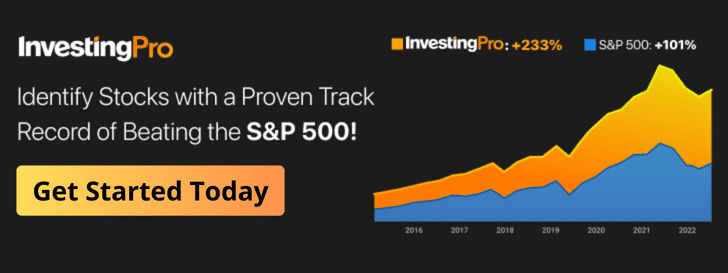In the world of finance, one term that plays a pivotal role in understanding a company’s financial health and future prospects is “Capital Expenditures” (CapEx). This article will delve into the intricacies of Capital Expenditures, elucidating their significance, calculation methods, and common questions surrounding this financial market term.
What Are Capital Expenditures (CapEx)?
Capital Expenditures, commonly referred to as CapEx, are investments made by a company to acquire, maintain, or upgrade tangible assets like property, plant, or equipment that are expected to provide benefits over an extended period. In simple terms, it represents expenditures to enhance a company’s operational efficiency or expand its productive capacity. These investments are essential for long-term growth and profitability.
Companies make CapEx investments for various reasons, including expanding production capacity, upgrading outdated machinery, or adopting new technology. These expenditures appear on the cash flow statement under “investing activities” and are also reflected in the balance sheet as assets.
How to Calculate Capital Expenditures?
Calculating Capital Expenditures (CapEx) is a fundamental step in understanding a company’s financial health and future prospects. The formula to calculate CapEx is straightforward, providing valuable insights into a company’s investment in tangible assets. Here’s a more detailed breakdown of the components in the CapEx formula:
CapEx = Ending Property, Plant, and Equipment (PPE) – Beginning PPE + Depreciation
Ending Property, Plant, and Equipment (PPE): This represents the total value of a company’s tangible assets at the end of a specific accounting period. PPE includes items like buildings, machinery, vehicles, and land.
Beginning PPE: Similarly, this is the total value of tangible assets at the beginning of the same accounting period. It acts as a reference point to measure the change in asset value over time.
Depreciation: Depreciation is a critical component of the CapEx formula. It accounts for the decrease in the value of assets over their useful life. Depreciation is a non-cash expense that reflects the wear and tear on assets and is recognized in the company’s income statement.
In the CapEx formula, the change in PPE reflects the net investment made in tangible assets during the accounting period. By subtracting the beginning PPE from the ending PPE, you can determine the net change in asset value. Adding back the depreciation expense accounts for the reduction in asset value due to wear and tear, ensuring that CapEx reflects the actual investment in new or improved assets.
This calculation provides a clear picture of the financial resources allocated to enhancing a company’s operational capacity, efficiency, and growth potential. Capital expenditures represent the portion of a company’s cash flow that is dedicated to building, upgrading, or maintaining tangible assets, which are essential for long-term success.

Example Calculation of Capital Expenditures
Suppose a company’s balance sheet shows:
- Beginning PPE: $500,000
- Ending PPE: $600,000
- Depreciation expense: $50,000
Applying the formula:
CapEx = (600,000 − 500,000) + 50,000 = 150,000
This means the company spent $150,000 on new or improved assets during the period.
Why Is Capital Expenditure Important?
Capital expenditures are a critical financial metric for businesses, investors, and analysts. They provide insights into a company’s growth strategy and long-term financial health.
Future Growth: CapEx reflects a company’s commitment to expand and innovate. By investing in essential assets, companies prepare themselves for future opportunities and challenges.
Profitability: These investments can lead to increased efficiency, reduced costs, and ultimately, higher profitability. They enable companies to remain competitive and adapt to changing market conditions.
Shareholder Confidence: Shareholders often view prudent CapEx spending as a positive sign. It demonstrates that the company is investing in its future, which can boost investor confidence.
Tax Benefits: Capital Expenditures may offer tax benefits, as companies can deduct these investments from their taxable income over time, reducing their tax liabilities.
Competitive Advantage: Investing in modern technology or infrastructure helps businesses stay ahead of competitors by improving efficiency, reducing costs, and enhancing product quality.
Impact on Cash Flow and Profitability: Large CapEx investments can temporarily reduce cash flow but are expected to generate higher earnings over time. Analyzing CapEx helps investors understand a company’s cash management strategy.
How to Interpret Capital Expenditures?
Capital expenditures (CapEx) provide insights into a company’s growth strategy, financial stability, and long-term outlook. The interpretation of CapEx depends on whether it is high or low relative to industry benchmarks, company history, and financial position.
High CapEx
A company with high capital expenditures is actively investing in growth, expansion, or modernization. This can be interpreted in several ways:
- Growth and Expansion – High CapEx may indicate that the company is expanding its operations, opening new facilities, or increasing production capacity, which can lead to future revenue growth.
- Technological Advancement – Companies in technology-driven industries may have high CapEx to upgrade equipment, adopt automation, or invest in research and development.
- Competitive Positioning – Increased investment in assets can help a company maintain or improve its market position by enhancing efficiency and product quality.
- Strain on Cash Flow – Excessively high CapEx can reduce free cash flow, potentially limiting dividends, share buybacks, or other financial activities.
- Debt Financing Risks – If CapEx is funded through excessive borrowing, it can increase financial leverage and put pressure on future earnings.
Low CapEx
A company with low capital expenditures may be conserving cash or operating in a mature industry with limited expansion needs. This can have different implications:
- Mature or Stable Business – Established companies with steady operations and little need for expansion may require lower CapEx.
- Efficiency and Cost Control – Low CapEx can indicate that a company is optimizing its asset utilization and maintaining efficiency without requiring large investments.
- Potential Underinvestment – If CapEx is too low for an extended period, it may suggest that a company is delaying necessary asset replacements, which could hurt long-term competitiveness.
- Stronger Free Cash Flow – Low CapEx can improve cash reserves, allowing companies to distribute dividends, repurchase shares, or invest in other growth opportunities.
- Market Uncertainty or Financial Constraints – Companies facing economic uncertainty or financial struggles may cut CapEx to preserve liquidity, which could be a warning sign for investors.
Types of Capital Expenditures
Capital expenditures come in various forms, including:
Expansion CapEx: Investments to increase a company’s capacity, such as building new facilities or purchasing additional machinery to meet growing demand.
Replacement CapEx: Replacing or upgrading existing assets to improve efficiency or comply with changing regulations, often including technology or machinery updates.
Maintenance CapEx: Expenditures to keep assets in working condition and extend their useful life. These include routine repairs and necessary maintenance.
Strategic CapEx: Investments aimed at gaining a competitive advantage, like research and development or technology enhancements.
When to Capitalize vs. Expense?
Determining whether an expense should be capitalized or expensed is a critical decision in accounting and financial management. Capitalizing an expense means that it’s recognized as an asset on the balance sheet and amortized or depreciated over time, while expensing it means recognizing it as a cost on the income statement immediately. The choice often depends on factors like the asset’s useful life and materiality. Companies typically capitalize significant, long-term assets like buildings and machinery, while smaller, shorter-term expenses are expensed.
What Is a Good Capital Expenditures?
A “good” level of CapEx depends on the company’s industry, financial health, and strategic goals. Neither high nor low CapEx is inherently good or bad — it depends on the company’s strategy, financial health, and industry standards. Investors should analyze CapEx trends alongside other financial metrics to understand a company’s long-term potential and risk profile.
Healthy CapEx spending should:
- Align with business growth: Investments should support revenue expansion and operational improvements.
- Be sustainable: Companies should maintain a balance between CapEx and available cash flow to avoid liquidity issues.
- Generate positive returns: The expected benefits should outweigh the costs, leading to increased productivity or revenue.
Investors often compare CapEx levels with a company’s competitors and industry benchmarks to determine if the expenditure is appropriate.
Capital Expenditure and Depreciation
Depreciation is a key component of CapEx. When a company capitalizes an asset, it spreads the cost over its expected useful life, reflecting the gradual wear and tear. This depreciation expense is recorded on the income statement and reduces the asset’s value on the balance sheet over time. It mirrors the asset’s loss in value as it ages, aligning with accounting principles and providing a more accurate representation of a company’s financial performance.
How do Capital Expenditures impact Free Cash Flow and Valuation?
Capital expenditures play a pivotal role in a company’s free cash flow (FCF) and valuation. FCF represents the cash generated by a company’s core operations after deducting both operating expenses and capital expenditures. Higher CapEx can reduce FCF, impacting a company’s financial flexibility and ability to pay dividends or reduce debt. In terms of valuation, investors often use metrics like price-to-earnings (P/E) ratios, and higher CapEx can lead to lower earnings, potentially influencing these valuation metrics.
Efficient Capital Expenditure Budgeting Practices
To make the most of CapEx, companies should adopt efficient budgeting practices. This involves:
Thorough Planning: Carefully analyze the need for CapEx, considering its alignment with strategic goals and potential ROI.
Risk Assessment: Evaluate the risks associated with each project, including market volatility, regulatory changes, and potential delays.
Cost Controls: Implement measures to control costs and prevent overruns during the project’s execution.
Regular Monitoring: Continuously assess the progress and results of CapEx projects to ensure they stay on track and deliver the expected benefits.
Optimization: Regularly review and adjust the CapEx budget to optimize investments and adapt to changing market conditions.
Efficient budgeting practices help companies maximize the value of their Capital Expenditures, ensuring that investments contribute to long-term growth and profitability while mitigating potential risks.
Limitations of Capital Expenditure
While CapEx is a useful indicator of business investment, it has limitations that investors and analysts must consider.
1. High Short-Term Costs
Capital expenditures require significant upfront spending, which can strain cash reserves and increase financial risk. Companies must ensure they have enough liquidity to cover operating expenses.
2. Uncertain Returns
CapEx investments do not always guarantee success. Market conditions, competition, or economic downturns can affect the expected return on investment.
3. Difficulty in Comparison
Different industries have varying CapEx needs, making it challenging to compare companies across sectors. A high CapEx in one industry may be normal but excessive in another.
4. Impact on Financial Ratios
Large CapEx spending can distort financial ratios such as free cash flow, making it difficult to assess a company’s immediate profitability.
5. Potential Overinvestment
Excessive CapEx can lead to overexpansion, resulting in underutilized assets and financial inefficiencies. Companies must balance growth with demand to avoid unnecessary expenditures.
How to Find Capital Expenditures?
Capital expenditures data is available in the InvestingPro platform. Find the capital expenditure across companies that are of interest to you and assess their competitor benchmark data.
For example, see below InvestingPro data for Apple (AAPL) capital expenditures:

InvestingPro+: Access Capital Expenditures Data Instantly
Unlock Premium Data With InvestingPro 📈💸
Gain instant access to Capital Expenditures data within the InvestingPro platform. Plus:
✓ Access to 1200+ additional fundamental metrics
✓ Competitor comparison tools
✓ Evaluate stocks with 14+ proven financial models
Capital Expenditures FAQs
Q. How is CapEx different from Operating Expenses?
Operating expenses (OpEx) are costs incurred in day-to-day operations, while CapEx represents long-term asset investments.
Q. What are some common examples of CapEx?
Examples include purchasing new machinery, building facilities, acquiring vehicles, and upgrading technology.
Q. Is there a specific ratio to evaluate a company’s CapEx spending?
There isn’t a fixed ratio, but comparing CapEx to a company’s revenue or market capitalization can provide insights into its financial strategy.
Q. Why is it essential to monitor CapEx for investors and analysts?
It provides insights into a company’s growth potential, financial stability, and commitment to long-term value creation.
Q. Can CapEx be negative?
Not typically. A company can have zero CapEx if it makes no asset purchases, but negative CapEx is rare since it involves spending, not income.
Q. How does CapEx impact financial statements?
CapEx appears as an outflow in the cash flow statement and increases assets in the balance sheet. It does not immediately affect the income statement.
Q. How do companies finance CapEx?
Companies fund CapEx through retained earnings, loans, bonds, or issuing stock. The financing choice depends on capital availability and cost.
Q. How often do companies report CapEx?
Companies disclose CapEx figures in quarterly and annual financial statements.
Q. Can CapEx be expensed immediately?
No. CapEx is capitalized and recorded as an asset, then gradually expensed through depreciation over its useful life.









